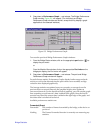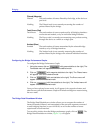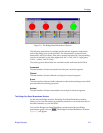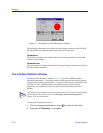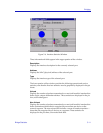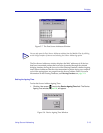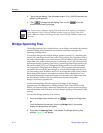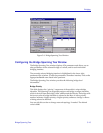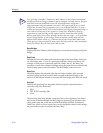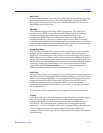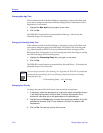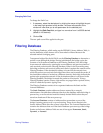
Bridging
5-14 Bridge Spanning Tree
2. Type in the new Ageing Time (allowable range is 10 to 1,000,000 seconds; the
default is 300 seconds).
3. Click to accept the new Ageing Time, or click to exit the
window without making changes.
Bridge Spanning Tree
The Bridge Spanning Tree window allows you to display and modify the selected
module’s bridge port information and protocol parameters relating to the
Spanning Tree Algorithm.
In a network design with multiple bridges placed in parallel (i.e., attached to the
same LAN), data loops must be prevented. The Spanning Tree Algorithm (STA) is
the method that bridges use to communicate with each other to ensure that only a
single data route exists between any two end stations. On a LAN interconnected
by multiple bridges, Spanning Tree selects a controlling Root Bridge and Port for
the entire bridged LAN, and a Designated Bridge and Port for each individual
LAN segment. A Designated Port/Bridge for a LAN segment forwards frames
from that LAN towards the Root Bridge, or from the Root Bridge onto the LAN.
All other bridge ports attached to that LAN are configured to filter (block) frames.
When data passes from one end station to another across a bridged LAN, it is
forwarded through the Designated Bridge/Port for each LAN segment towards
the Root Bridge, which in turn forwards frames towards Designated
Bridges/Ports on its opposite side.
During the Root Bridge Selection process, all bridges on the network
communicate STA information via Bridge Protocol Data Units (BPDUs). With
BPDUs, all network bridges collectively determine the current network topology
and communicate with each other to ensure that the topology information is kept
current.
To access the Bridge Spanning Tree window:
1. From the Bridge Status window, click on to display the Bridge menu.
or
From the Module View window, click on the Bridge label in the module
display; the bridge menu will appear.
2. Drag down to Spanning Tree..., and release. The Bridge Spanning Tree
window, Figure 5-9, will appear.
NOTE
Note that the Source Addresses Ageing Time is the same as the Ageing Time displayed
(and configured) via the Filtering Database window; setting the Ageing Time in the
Source Addresses window also changes the time in the Filtering Database window, and
vice versa.




